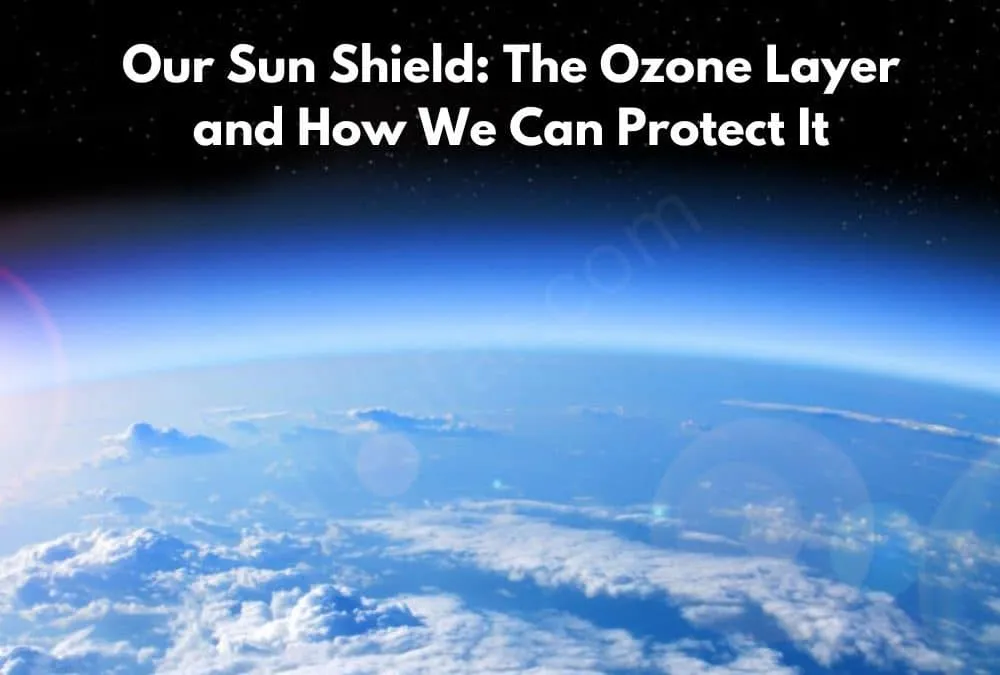High above us lies a vital shield protecting life on Earth: the ozone layer. Ozone (O3), consisting of an extra oxygen molecule, is situated in a very thin layer (15-35 kilometres above ground) of air. Just like a sponge, the ozone absorbs most of the sun’s dangerous ultraviolet (UV), in particular, the UVB radiation.
Although a certain amount of UV rays help in the synthesis of vitamin D, extended UVB exposure may cause serious problems. Increased UVB reaching the Earth’s surface due to ozone depletion has been linked to
- Skin cancer
UVB damages the skin cells, increasing the likelihood of developing melanoma and other types of cancers.
- Eye cataracts
The cataracts that occur when the lens is clouded can be caused by excessive exposure.
- Impacts on ecosystems
The excessive UVR causes damage to phytoplankton, which are tiny marine plants that form the starting of the ocean food web.
In the past few decades, scientists have found that the ozone layer is thinning, especially around the poles. The reduction in the ozone layer is due to man-made chemicals named ozone-depleting substances (ODS). These ODS include
- Chlorofluorocarbons (CFCs): For a long time till today, CFCs have been the major components of refrigerants and aerosol cans. As such, they break down into chlorine atoms in the upper atmosphere, which in turn destroy ozone molecules.
- Halons: Halons, which are applied in fire extinguisher systems, also release chlorine which destroys ozone.
Fortunately, the world community realized ozone depletion was a threat and took action. In 1987, The Montreal Protocol was signed, which is an international treaty designed to cut down the production and usage of Ozone Depleting Substances (ODS). This cohesive action has proven to be a loud victory for ecological preservation.
The Montreal Protocol is regarded as one of the most effective international agreements ever reached. It achieved remarkable progress through
- Universal Participation: Worldwide, nearly all countries have ratified this treaty, signifying a very strong global interest.
- Regular Reviews and Adjustments: It has the provisions for periodic scientific review and updates of regulations to respond to new threats.
- Technology Transfer: Developed countries provided financial and technical assistance to developing countries to enhance their transition to ODS.
The result? The level of atmospheric chlorine has been reduced drastically, and the ozone layer is slowly recovering. Despite the fact that the recovery is estimated to take decades, the Montreal Protocol has become a saga of global cooperation in solving large-scale environmental issues that occur all over the world.
Although the Montreal Protocol has been a success story, vigilance is of paramount importance. Here are some additional ways we can contribute to ozone protection:
Supporting Research: It is of utmost importance that scientific advancements are used in order to monitor ozone health, identify new risks like possible substitutes for ODS, and develop better environmentally friendly technology options. Research regarding indirect consequences of climate change on ozone levels has to be as well a part of climate change research. Climatic change might disturb the atmospheric circulation, and, as a result, the ozone content is likely to be affected.
- Promoting Sustainable Practices
Support the companies and industries that implement the sustainable practices throughout the production lines and the supply chains of alternatives to ODS. Focus on buying ozone-friendly labelled products.
- Educating Others
Creating awareness about the significance of ozone preservation and the ongoing efforts of protection can trigger the community’s participation. Talk to friends and family about sun safety particularly for children, and support non-profit organizations working on environmental issues.
Besides, the measures mentioned above, individuals can also make small changes in their lifestyle to preserve the ozone layer. This can include
- Being mindful of sun exposure
Limit your midday sun exposure, put on tight-woven clothes and when possible seek shade. It is also recommended to use sunscreen with an SPF of 30 and having both UVA and UVB protection.
- Choosing eco-friendly products
If you are shopping for new appliances or other products, find products that use ozone-friendly substitutes instead of ODS. Do some research beforehand to determine the accreditations from reliable sources that promote ozone-friendly products.
- Supporting Sustainable Businesses
Try to find businesses that adhere to environmental responsibility and sustainable standards. Analyze the way they employ ODS substitutes within their production process and products.
Even minor adjustments can be of great value when magnified by hundreds of millions of earthlings and make a difference in the ozone layer preservation. We can take this one step further by learning and understanding the science behind the threats and the solutions to implement and save this significant shield for ourselves and future generations to come.
The Montreal Protocol is a demonstration of the success of international cooperation in environmental conservation as well. Nonetheless, our efforts are not finished. The ozone layer needs to be continuously monitored, potential risks need to be researched, and sustainable activities need to be promoted so that our children and their children can enjoy a healthy ozone layer.
Besides these individual steps, recommending policies which will promote renewable energy development and energy efficiency will not only help with reducing reliance on fossil fuels but also with the associated environmental risks. Through cooperation, we can manage to preserve the functionality of the ozone layer, as it serves as protection for life on earth, thus rendering a cleaner planet for all of us.



